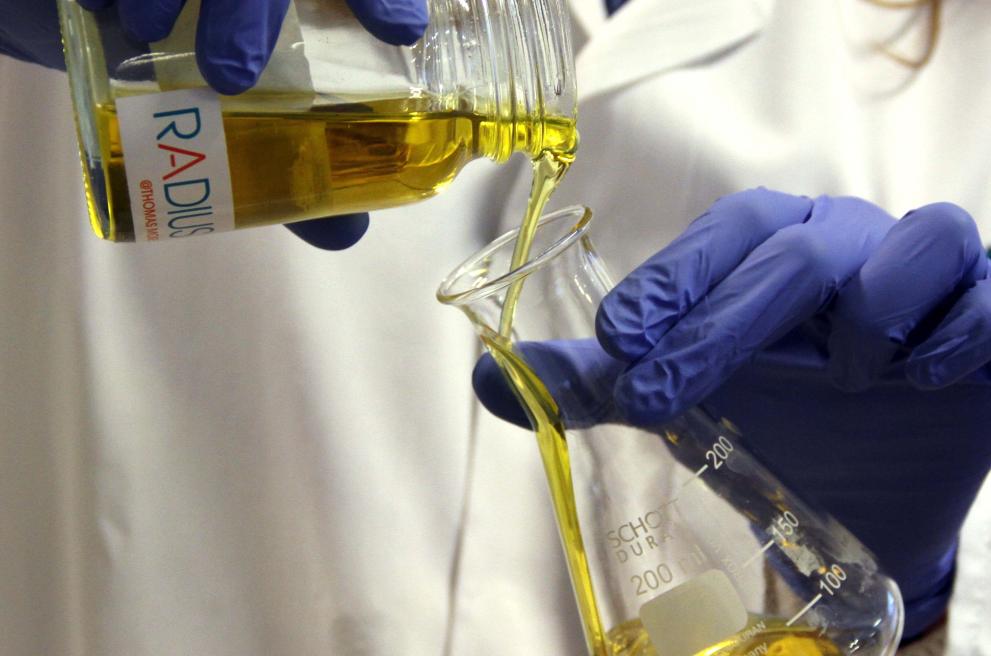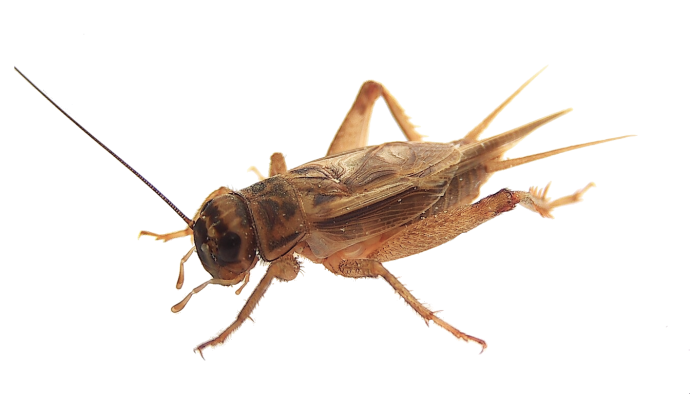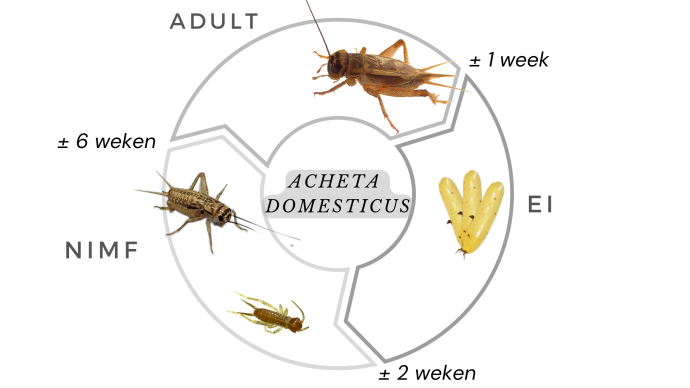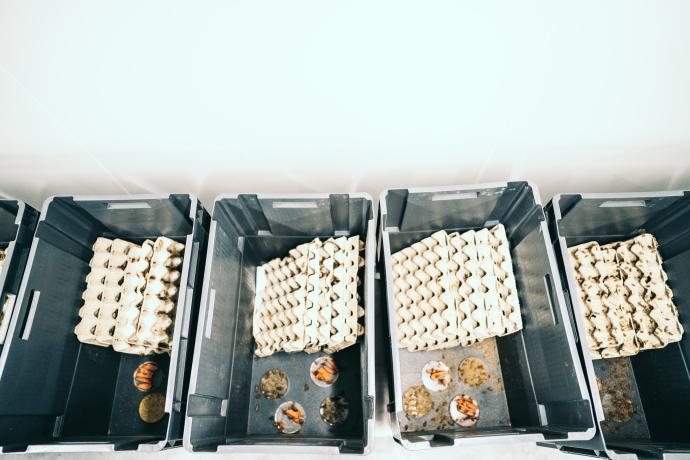

Although we have been living with these insects for quite some time, their potential in food and feed has been known to us only recently. This species is on the daily menu of many people from other parts of the world, which has led to knowledge and experience regarding its production.
House crickets (Acheta domesticus) have long been known as a food source in other parts of the world, such as Asia, for example. Meanwhile, this idea has also grown in the West and a Novel Food Dossier for house crickets was approved (Regulation No. 2015/2283). Specifically, this means that house crickets may be sold in dried, frozen and ground form as food on the European market.
House crickets belong to the family Gryllinae and are distributed globally. In temperate climates, they overwinter in heated buildings. Adult house crickets measure approximately 16 mm. They are omnivores and feed on a variety of plant and animal material such as leaves, vegetables, fruits, seeds, live and dead insects.

House crickets are hemimetabolic insects: from the eggs emerge nymphs, which already exhibit very similar characteristics to the adult insect. They do not undergo a pupal stage to transform to adult. After about 1 week in the adult stage, females start to lay eggs. They do this a few centimeters deep in moist soil (e.g. moistened peat). A female can lay up to 3000 eggs. After approximately 14 days, the eggs hatch.

The production stage (nymphal stage) lasts about 5 to 6 weeks, depending on environmental conditions. After approximately 6 weeks, house crickets transform into adults. Both adults and nymphs can serve for applications, depending on the desired characteristics. However, mostly adults are being used. House crickets are not dependent on light and thus can be reared in the dark. Because they can jump quite high, breeding crates of at least 50 cm high are recommended. Closed (and automated) breeding systems are also an option. Crickets like to hide and are therefore best provided with hiding places in artificial breeding systems (e.g. egg cartons). Crickets thrive best on a dry food with a protein content of 20-25%. This feed is ideally ground (500 µm). Drinking systems (water) and/or vegetables can be used to meet the crickets' moisture requirements. Crickets are reared at a temperature of 30°C and a relative humidity of 50%. Fed ground chicken feed (laboratory standard) and carrots, the results below can be achied.

She now maintains the insect colonies in the Insect Pilot Plant and assists in research regarding insect optimisation and the use of by-products as insects feed.
Ann onderhoudt de insectenkweek in de Insect Pilot Plant en helpt mee in het onderzoek naar productie-optimalisatie en het gebruik van nevenstromen in het teeltproces.